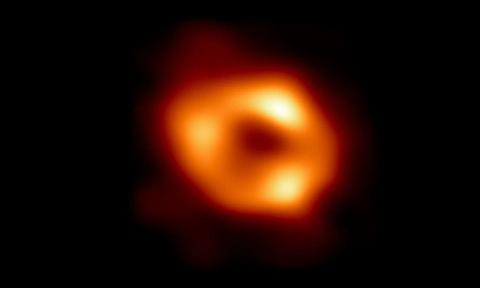
In a discovery that has greatly pleased astronomers, and greatly sent me into an existential crisis, the good people over at the Center for Astrophysics (CfA) have produced the first direct image of a black hole that is at the center of Milky Way AKA the galaxy with all of our homes and pizza rolls.
An international team of astronomers led by scientists at the CfA have managed to capture a picture of the black hole, that they’ve named Sagittarius A-Star, with the help of the Event Horizon Telescope (EHT) Collaboration.
Our own black hole! Astronomers have just revealed the 1st image of the supermassive black hole at the center of our Milky Way galaxy using the @ehtelescope- a planet-scale array of radio telescopes that emerged from decades of NSF support. https://t.co/bC1PZH4yD6#ourblackholepic.twitter.com/pd96CH3V0m
— National Science Foundation (@NSF) May 12, 2022
The EHT team is a worlwide network of radio telescopes that link together to form a single Earth-sized virtual instrument. It was responsible for capturing the first ever image of any black hole back in 2019 from the Messier 87 galaxy (side note: who is naming these galaxies? Let’s have a chat).
Scientists have confirmed that Sagittarius A-Star, or SgrA* (pronounced as saydge-ay-star), is displaying the characteristic signs of a black hole, which are a bright ring of super hot glowing material circling a dark center so dense and seemingly bottomless that even light cannot escape.
“This is our supermassive black hole,” said Peter Galison, director of Harvard’s Black Hole Initiative, a member of the EHT team, and the Joseph Pellegrino University Professor in the History of Science and Physics. “This is at the center of where we live.”
In case you didn’t know, or haven’t seen Interstellar at least 5000 times (he comes back from a black hole for his daughter, you guys!), a black hole is a region of space where matter is collapsed on itself. In case that definition wasn’t terrifying enough, scientists have theorised that black holes usually emerge from the explosive demise of a large star. As you can see in the image, the light is bending around the dark center, which is known as the event horizon, and this means that this black hole’s gravitational pull is extremely powerful, nearly four million times that of our sun, according to the CfA.
But does that mean we should quit our jobs and run around the streets screaming “End of the world is here, repent!”? You can if you want, I don’t know your life. But it’s not as scary as it sounds, at least that’s what CfA astrophysicist Michael Johnson claims.
According to Johnson, who is also a leading member of the EHT, one of the major observations made from this black hole is that it doesn’t appear to be pulling in as much materials as others, making the environment relatively stable. So even though NASA Einstein Fellow Sara Issaoun has revealed that one side of the black hole directly faces the Earth, it’s not a cause of worry.
Johnson claims that while SgrA* is ravenous, it’s also inefficient. “While M87 had one of the biggest black holes in the universe and it launches a jet that pierces its entire galaxy, Sgr A* is giving us a view into the much more standard state of black holes, quiet and quiescent.”
It’s also way smaller than M87. According to the Harvard Gazette, if SgrA* was the size of a doughnut, then M87 would be roughly the size of a football field.
This is also one of the reasons why the image, despite the black hole being smaller and closer than M87, is blurry. The superheated gas that travels at near-light speed and takes days to orbit M87, takes a few minutes to orbit SgrA*. “The analogy would be if you have an adult getting their portrait taken with a long exposure, and they’re just sitting still. That’s M87,” said Issaoun, “For Sgr A*, you have a toddler running around and you’re trying to get their portrait with the long-exposure camera. You’re just going to get a bunch of blur everywhere.”
Scientists have now begun to study the measurements in the new image to test the physics we currently know and use to describe black holes. So far, all the observations are consistent with Einstein’s theory of gravity and general relativity.
So while we may not be hurtling at light speed towards a supermassive black hole, this does put things into perspective, right? Maybe I will go for that cheese-stuffed crust on my pizza tonight. There’s a giant black hole just 9.5 trillion km away from Earth, I deserve it.





